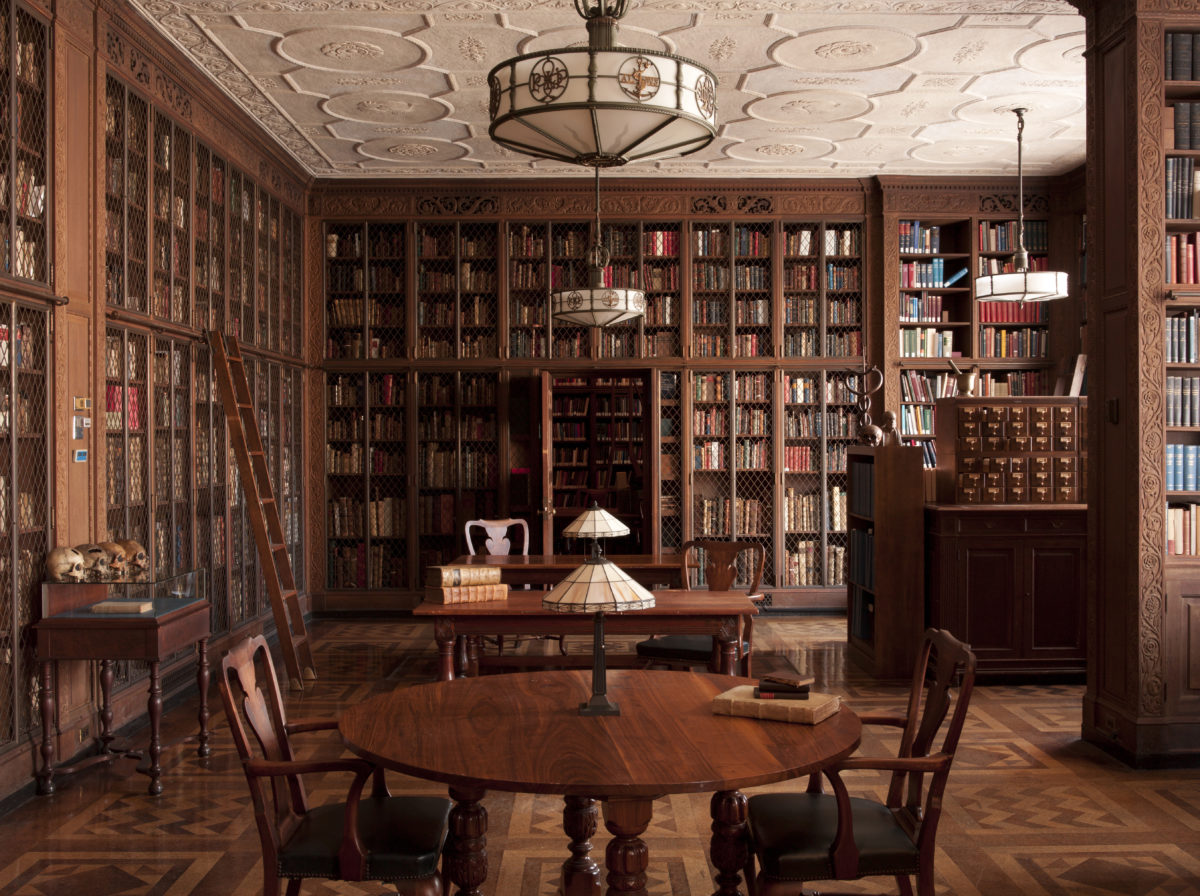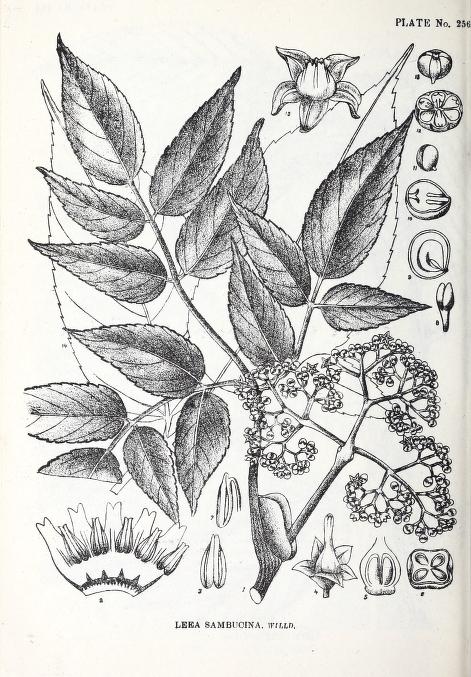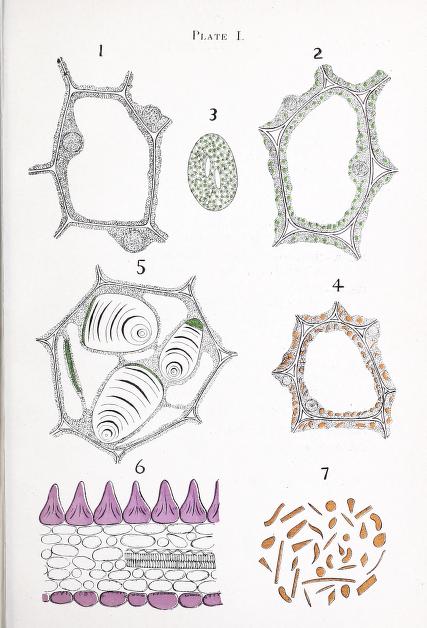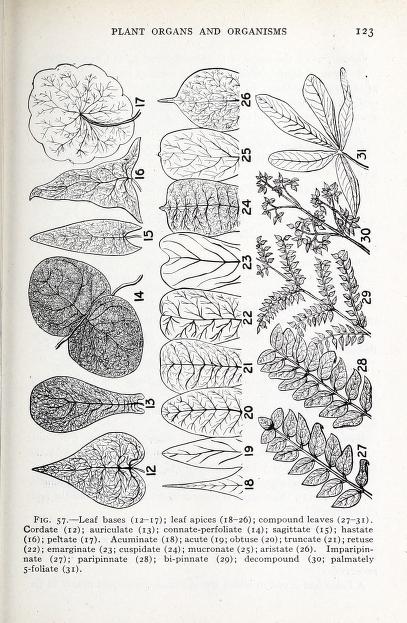New Medical Botany Titles in BHL Thanks to The New York Academy of Medicine
The New York Academy of Medicine Library has contributed nine digitized titles (11 volumes) on medical botany to the Biodiversity Heritage Library (BHL) as part of the Expanding Access to Biodiversity Literature project. It is very exciting to share some of the Academy Library’s botanical resources with the wider public.
The Academy is home to one of the most significant historical libraries in medicine and public health in the world, safeguarding the heritage of medicine to inform the future of health. The Library’s collections contain many of the formative texts of medicine and allied fields from the 16th, 17th, and 18th centuries, as well as more recent titles. It is equally renowned for its extensive journal collection comprising medical serials from around the world, and for significant holdings in manuscripts, archives and ephemera, all of which are of great historical interest.
 |
| The New York Academy of Medicine Library’s Drs. Barry and Bobbi Coller Rare Book Reading Room. |
While the Library’s collections include a large number of printed botanical books dating back to the beginning of the sixteenth century, for this project we were interested in identifying resources that could be sent to the Internet Archive for external digitization, which meant that we concentrated on our holdings from the second half of the 19th century forward through 1922.
After generating lists from our online catalog, we checked to see if any of these resources had already been digitized by the BHL, Internet Archive, or HathiTrust. For this process, we developed a set of simple guidelines:
- Resources not available via BHL, Internet Archive or HathiTrust remained on the list.
- Resources already available via the BHL were eliminated from the list.
- Resources already available via the Internet Archive were eliminated from the list because BHL harvests content from the Internet Archive, so there would be no need for us to digitize that content.
- Resources already available via HathiTrust could still potentially be digitized for access via the BHL based on whether our copy provides additional information for the public once digitized. For example, the Indian Medicinal Plants (Kīrtikara & Basu, 1918) has been partially digitized by HathiTrust, but the volume with the images was missing. As such, it became important for us to digitize so that it would be fully available.
We went through multiple lists and rounds of de-duplication to narrow down our potential submission. Once we finalized the list, Scott Devine, Head of Preservation, conducted a conservation assessment to determine which resources could be sent out for digitization and which were so fragile that they could only be digitized in house. We separated these into two lists. The first list was sent to the Internet Archive for digitization and is our contribution to BHL. The second list will be a project for our new digital lab, and we hope to make them available at a future date.
Indian medicinal plants (Kīrtikara & Basu, 1918) stood out as a resource to digitize and share widely. It documents the medicinal plants found in India. The authors describe a need to provide a text that reproduces illustrations of Indian medicinal plants from other works since there were few prior to this publication. Dr. W. Roxburgh’s text, reprinted in 1874, was used as a reference throughout.
 |
| Kīrtikara, Kānhobā Raṇachoḍadāsa and Baman Das Basu. Indian medicinal plants. 2nd Ed. (1918). Plate #256, showing Leea sambucina. Digitized by The New York Academy of Medicine. http://s.si.edu/2DnszmA. |
Although Indian medicinal plants did not focus on the use of plants in the development of drugs, this theme can be seen throughout the resources submitted to the BHL. Each author grapples with the role of plants in the creation and production of drugs.
In A course in botany and pharmacognosy (1902), Henry Kraemer, Professor of Botany and Pharmacognosy, defines pharmacognosy as the “study of drugs of vegetable origins.” Kraemer devotes the first part of his text to plant morphology and the second part to pharmacognosy. In addition, he provides illustrations to aid in the study of both parts so that students can connect the descriptions throughout the text to the visual representations.
 |
| Kraemer, Henry. A course in botany and pharmacognosy. 1902. Plate #1, showing organized cell-contents. Digitized by The New York Academy of Medicine. http://s.si.edu/2FJqAaI. |
Youngken’s Pharmaceutical botany, 2nd edition (1918) was expanded to take advantage of the growing area of botany, including a section on drug-yielding plants. The text focuses on the morphology and taxonomy of plants used in drug development.
 |
| Youngken, Heber W. (Heber Wilkinson). Pharmaceutical botany. 1918. Fig 57, showing leaf bases, species and compound leaves. Digitized by The New York Academy of Medicine. http://s.si.edu/2mMr7Ri. |
In Pharmacal plants and their culture (1912), Schneider argues that the majority of imported plants used in medicine could already be available in the United States. He focuses on California and outlines what can be cultivated and grown in the state. Schneider provides a list of uses and common names.
Gattinger’s and Allison’s report (1894) is an observational inventory of Tennessee’s plants and their descriptions based on a similar project conducted by North Carolina. Published by the Tennessee Department of Agriculture, the report emphasizes the importance of documenting and understanding the native plants of Tennessee and how they can help increase usage and revenue.
Overall, readers of this collection can begin to understand the role of plants in the creation, development and economic viability of drugs. Many of the resources provide some form of inventory, index or list that documents the plants and associated drugs.
All titles submitted by the Academy Library to BHL:
- Baillon’s Programme du cours d’histoire naturelle médicale professé à la Faculté de médecine de Paris. 3ème partie, Etude spéciale des plantes employées en médecine (1878)
- Gattinger & Allison’s The medicinal plants of Tennessee : exhibiting their commercial value : with an analytical key, descriptions in aid of their recognition, and notes relating to their distribution, time and mode of collection, and preparation for the drug market (1894)
- Kīrtikara & Basu’s Indian medicinal plants / (Vol. 2nd ed. (1918) (1918)
- Kraemer’s A course in botany and pharmacognosy (1902)
- Meyer’s Arzneipflanzenkultur und Kräuterhandel : rationelle Züchtung, Behandlung und Verwertung der in Deutschland zu ziehenden Arznei- und Gewürzpflanzen ; eine Anleitung für Apotheker, Landwirte und Gärtner (1911)
- Moquin-Tandon’s Éléments de botanique médicale : contenant la description des végétaux utiles à la médecine et des espèces nuisibles à l’homme, vénéneuses ou parasites, précédée de considérations sur l’organisation et la classification des végétaux / (2. éd.) (1866)
- Schneider & California. State Board of Forestry’s Pharmacal plants and their culture (1912)
- Velásquez & Maldonado’s Contribución al estudio de la materia médica peruana (1920)
- Youngken’s Pharmaceutical botany / (2d ed., and enl., enl.with 195 illustrations) (1918)





nice post